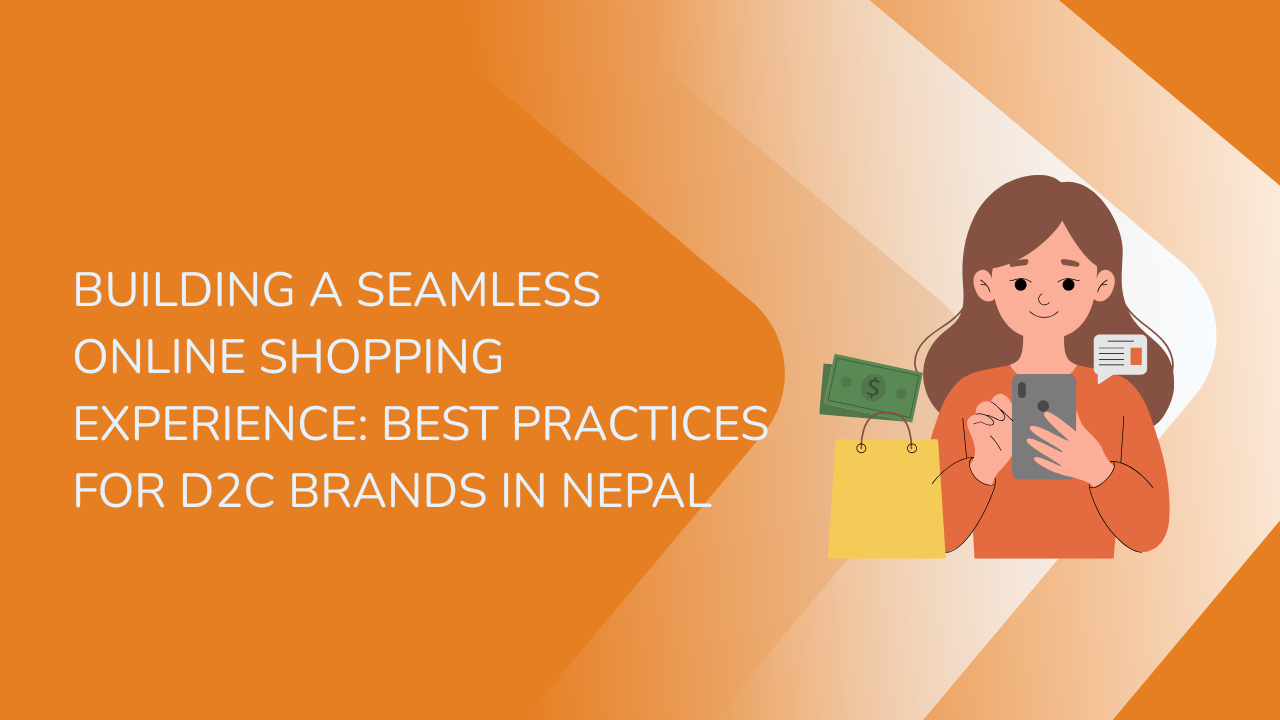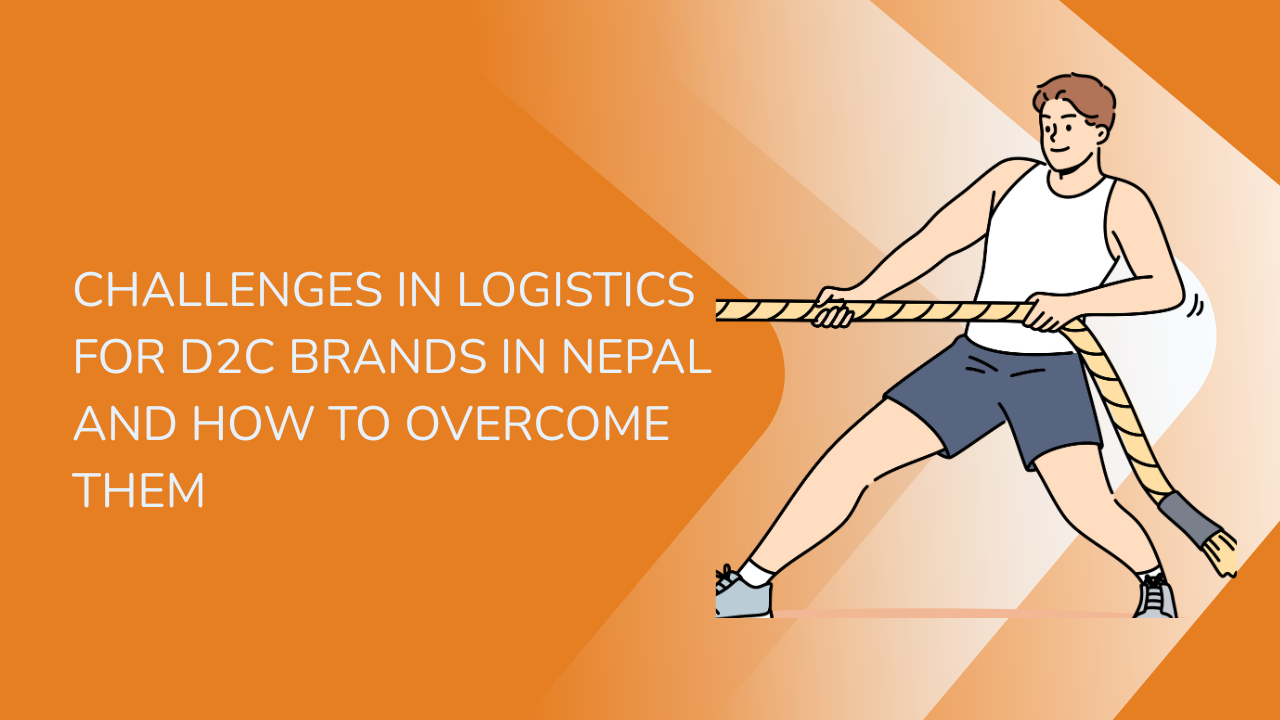Share this Article
In recent years, the rise of Direct-to-Consumer (D2C) brands has revolutionized the way businesses interact with customers. By bypassing traditional retail channels, D2C brands have the opportunity to engage directly with their target audiences, offering personalized experiences, better pricing, and stronger customer relationships. However, to successfully navigate this model, it is essential to understand the unique buying behavior of Nepali consumers and how D2C brands can tailor their products and services to meet their specific needs.
Nepali consumers, much like their global counterparts, are becoming more digital-savvy and price-conscious, but their purchasing habits are also influenced by cultural, economic, and infrastructural factors unique to Nepal. In this blog, we will explore the key behaviors of Nepali consumers, examine how D2C brands can leverage these insights, and look at strategies for tailoring offerings to local preferences.
The Modern Nepali Consumer: Shifting Trends and Expectations
The typical Nepali consumer has evolved significantly in recent years. With the rapid expansion of mobile internet access and the growing use of smartphones, Nepali consumers, particularly the younger generation, are increasingly engaging with online platforms. Alongside this shift, consumer preferences and expectations are changing as well. The younger generation, comprising mainly millennials and Gen Z, is increasingly influencing shopping trends, seeking out convenience, value, and a seamless digital experience. While older generations may still prefer traditional retail methods, many are transitioning to online shopping, especially as the convenience and reach of digital services continue to grow.
A key factor in this transition is the rise of mobile commerce. In Nepal, mobile phones are a primary tool for internet access, and many consumers now make purchases via their smartphones. This change has important implications for D2C brands, as they must ensure their platforms are optimized for mobile users. Additionally, the integration of e-commerce into daily life is changing the way Nepali consumers engage with brands, moving them away from purely transactional relationships and toward brand loyalty, personalized experiences, and emotional connections with products.
1. Price Sensitivity and Value for Money
One of the most defining traits of the Nepali consumer is their sensitivity to price. Economic conditions, including a relatively lower average income compared to many neighboring countries, make consumers highly conscious of the price-to-value ratio of their purchases. While there is a growing middle class with more disposable income, a large portion of the population still prioritizes affordability over luxury.
How D2C Brands Can Adapt:
- Competitive Pricing Structures:
Nepali consumers are always looking for deals and competitive prices. Many D2C brands are able to offer lower prices by cutting out the middlemen in the traditional retail chain. This reduction in overhead costs allows brands to pass on savings to customers, offering products at more competitive rates. Brands such as SastoDeal have gained popularity for precisely this reason, as they are able to provide affordable products without sacrificing quality.
- Frequent Promotions and Discounts:
Nepali consumers love discounts, especially during major festivals and holiday seasons like Dashain and Tihar. D2C brands can increase sales by offering promotions, flash sales, and special offers that coincide with these peak shopping periods. These events create a sense of urgency and encourage customers to purchase more, thus boosting brand visibility and revenue.
- Flexible Payment Options:
Cash-on-delivery (COD) is still a popular payment method in Nepal, and many consumers prefer this method as it provides a sense of security. D2C brands that offer COD, alongside other payment options such as mobile wallet payments and online banking, are likely to see higher conversion rates. By providing multiple payment methods, D2C brands can appeal to a broad customer base, even among those who may not have access to credit cards or digital banking.
2. Convenience and Accessibility
As urbanization increases, the demand for convenience is one of the most significant factors shaping consumer behavior in Nepal. The rapid pace of life in cities like Kathmandu means that consumers are seeking faster, more convenient ways to shop. Moreover, the COVID-19 pandemic further accelerated the demand for online shopping, as people looked for safer, contactless ways to buy essential items.
How D2C Brands Can Adapt:
- Optimized Digital Platforms:
Given that many Nepali consumers now prefer shopping online, D2C brands must prioritize easy-to-use websites and mobile applications. A platform that is intuitive and requires minimal effort to navigate will attract a larger audience, particularly those who may not be highly tech-savvy. Companies like Daraz Nepal have successfully capitalized on the growing e-commerce trend by offering a mobile-friendly app and website, allowing customers to easily browse, compare, and purchase products.
- Quick and Reliable Delivery:
The delivery experience plays a significant role in online shopping in Nepal. A robust logistics system is crucial for ensuring that products arrive quickly and in good condition. D2C brands are increasingly focusing on building reliable delivery systems that can serve both urban centers and remote areas. MeroKirana, for instance, has built a solid reputation for its timely grocery deliveries, capitalizing on the growing trend of online grocery shopping in Kathmandu and beyond.
- Round-the-Clock Availability:
Nepali consumers increasingly expect to be able to shop whenever they choose. Offering a 24/7 shopping experience is essential for meeting the convenience demands of today’s consumers. D2C brands that allow customers to shop at any time, day or night, enhance the overall customer experience and make it easier for individuals with busy schedules to purchase products at their convenience.
3. Cultural Influences and Social Context
Nepali consumer behavior is significantly influenced by cultural and social factors. Shopping is often seen as a communal activity, particularly during holidays and festivals when family and community bonds are central. The concept of gift-giving during major festivals, such as Dashain and Tihar, plays a large role in shaping purchasing patterns, particularly for consumer goods like clothing, electronics, and household items.
How D2C Brands Can Adapt:
- Aligning with Cultural Events:
D2C brands in Nepal can significantly benefit from aligning their marketing strategies with the local calendar of festivals and holidays. By launching special offers and discounts during major Nepali festivals like Dashain and Tihar, brands can tap into the buying frenzy that occurs during these periods. Offering products that cater to traditional gift-giving practices can boost sales and create positive brand associations.
- Building Trust Through Social Proof:
Nepali consumers often rely on word-of-mouth recommendations from family, friends, and trusted social networks when making purchasing decisions. As a result, D2C brands must work on building trust through social proof. Customer testimonials, influencer partnerships, and user-generated content can help brands establish credibility and make potential customers feel more confident in their purchasing choices.
- Emphasizing Local Relevance:
D2C brands can increase their appeal by incorporating local preferences into their offerings. Whether it’s the inclusion of traditional Nepali fabrics, flavors, or culturally significant symbols, brands that acknowledge and respect Nepali culture can foster a deeper connection with their customers. For example, Woven, a sustainable fashion brand, emphasizes locally sourced materials and artisanship, connecting with customers who value local craftsmanship and ethical production practices.
4. Digital Savviness and Engagement with Technology
As internet access continues to improve in Nepal, there is a growing trend of digital engagement. With the widespread use of social media platforms such as Facebook, Instagram, and YouTube, Nepali consumers are becoming more accustomed to researching products and making purchases online. Social media is not just a tool for staying connected—it is also an essential part of the buying process for many Nepali consumers.
How D2C Brands Can Adapt:
- Targeted Social Media Marketing:
Social media marketing plays a crucial role in reaching and engaging Nepali consumers. Brands must utilize platforms like Facebook and Instagram to create dynamic content, engage with followers, and advertise products. Nepali consumers are more likely to engage with a brand they can relate to, especially when it is active and present on social media. Brands like SastoDeal use targeted Facebook ads, promotions, and customer interaction to grow their presence and increase customer loyalty.
- Personalized Advertising:
Personalization is key to ensuring that D2C brands remain relevant in the eyes of Nepali consumers. Using consumer data to create personalized shopping experiences, such as recommending products based on previous searches or purchases, can significantly improve conversion rates. D2C brands can utilize tools such as email marketing, retargeted ads, and content curation to engage consumers and provide a more tailored shopping experience.
- Mobile-Centric Shopping:
Given the popularity of mobile phones as the primary access point to the internet, D2C brands must ensure their digital platforms are optimized for mobile use. Mobile commerce (M-commerce) is growing rapidly in Nepal, and brands need to provide easy-to-use apps and mobile-friendly websites to capture this expanding segment. Brands that streamline the mobile shopping process, offer push notifications, and ensure smooth checkout experiences will be well-positioned for success.
5. Brand Loyalty and Emotional Connection
In Nepal, like in many other parts of the world, consumer loyalty is built on trust and emotional connections. Nepali consumers are more likely to return to brands that not only offer value but also resonate with them on a personal level. The role of brand identity, authenticity, and emotional appeal cannot be overstated.
How D2C Brands Can Adapt:
- Building an Emotional Connection:
Nepali consumers are drawn to brands that tell a compelling story, promote shared values, and connect with them emotionally. D2C brands can differentiate themselves by focusing on the human aspect of their products, such as the artisans who produce them or the impact the brand has on local communities. This kind of storytelling fosters deeper connections and builds brand loyalty. Brands like Woven leverage the personal stories behind their sustainable products to establish a strong emotional bond with consumers.
- Customer Service Excellence:
Providing top-notch customer service is vital for retaining loyal customers in Nepal’s competitive D2C market. Offering hassle-free returns, responsive customer support, and secure payment options can create positive experiences that encourage repeat purchases. D2C brands must also be proactive in resolving any issues customers may face, further enhancing their trust and loyalty.
- Loyalty Programs and Referrals:
Rewarding loyal customers through discounts, exclusive offers, and referral bonuses can help strengthen customer retention. Loyalty programs are especially effective in Nepal, where consumers appreciate tangible benefits for their continued patronage. Implementing such programs can encourage repeat purchases and incentivize customers to spread the word to their peers.
Conclusion: Charting a Path Forward for D2C Brands in Nepal
To succeed in Nepal’s growing e-commerce landscape, D2C brands must develop a deep understanding of the unique characteristics that shape Nepali consumer behavior. The rise of digital technology, coupled with a price-sensitive yet increasingly digital-savvy population, presents both opportunities and challenges for brands. By tailoring their offerings to meet the specific needs and preferences of Nepali consumers, D2C brands can establish themselves as trusted partners in the consumer’s journey.
The future of D2C in Nepal holds immense promise. As mobile access and internet penetration continue to rise, the market for online shopping will continue to expand. By staying attuned to local needs, offering personalized experiences, and creating strong emotional connections, D2C brands will be able to successfully tap into Nepal’s evolving consumer market and secure long-term success.
Categories:
Marketing & Growth
Tags:
e-commerce app
,
Small Business
,
strong brand
,
E-commerce
,
Role of Social Media
,
Growing sales
,
strategies
,
Social media
,
Logistics
,
Delivery Networks
,
Flexible Delivery
,
Mobile Platforms
,
Web
,
SEO
,
search engine optimization
,
Global E-commerce
,
Nepali businesses
,
reviews and ratings
,
Dropshipping
,
picture
,
Photography
,
Fraud prevention
,
E-commerce fraud
,
Influencer marketing
,
Boost
,
festival season
,
Top Mistakes
,
key trends
,
e-commerce landscape.
,
Building trust
,
Nepali e-commerce market
,
Starting an online store
,
launch
,
Email Marketing
,
Email List
,
Handling returns and refunds
,
Cash on Delivery vs. Online Pa
,
(COD) vs Online Payment
,
Cash on Delivery
,
Pricing
,
cost of goods sold (COGS)
,
DigitalNepal
,
NepaliEntrepreneurs
,
GrowOnlineNepal







